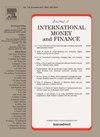Green vs. brown: Climate risk showdown – who’s thriving, who’s diving?
IF 2.8
2区 经济学
Q2 BUSINESS, FINANCE
引用次数: 0
Abstract
Increasingly complex climate change poses unprecedented risks and challenges. We attempt to analyze the strategic responses of firms in dealing with climate risk and whether green firms outperform brown firms by exploring the relationship between climate risk and firms’ cash flow. To this end, this paper uses the high-dimensional fixed-effects model for empirical analysis based on panel data of Chinese listed firms from Q1 2010 to Q4 2022. We find that firms have the motivation to hold more cash in the face of climate risk, and that brown firms will be more proactive in cash flow management compared to green firms. In addition, there are significant industry and seasonal effects of climate risk on firms’ cash flow. Mechanism tests find that climate risk prompts firms to increase cash flow by forcing them to reduce financial leverage and erode operating costs, as well as by inducing increased media attention to the firm. Heterogeneity analysis shows that the positive effect of climate risk on cash flow is more significant among low digital transformation firms, high financial constraints firms, firms with low managerial myopia, and SOEs. An analysis of the economic consequences shows that climate risk leads firms to be more aggressive in capturing market share, increasing productivity and strengthening ESG performance. The above findings help to enlighten firms on how to manage their risk exposures and adjust their internal governance structures as a way to maintain stable operations in an environment of intensified uncertainty. In brief, this paper highlights the differentiated financial decisions that green and brown firms make in response to climate risk, providing empirical evidence and policy implications for advancing the green transformation of firms.
绿色与褐色:气候风险对决--谁在茁壮成长,谁在沉沦?
日益复杂的气候变化带来了前所未有的风险和挑战。我们试图通过探究气候风险与企业现金流之间的关系,分析企业应对气候风险的战略对策,以及绿色企业是否优于褐色企业。为此,本文基于 2010 年第一季度至 2022 年第四季度的中国上市公司面板数据,采用高维固定效应模型进行实证分析。我们发现,面对气候风险,企业有动力持有更多现金,而且与绿色企业相比,棕色企业在现金流管理方面会更加积极主动。此外,气候风险对企业现金流还存在显著的行业和季节影响。机制检验发现,气候风险通过迫使企业降低财务杠杆和侵蚀运营成本,以及引起媒体对企业的更多关注,促使企业增加现金流。异质性分析表明,气候风险对现金流的积极影响在低数字化转型企业、高财务约束企业、低管理近视企业和国有企业中更为显著。对经济后果的分析表明,气候风险会促使企业更积极地抢占市场份额、提高生产率和加强环境、社会和公司治理绩效。上述研究结果有助于帮助企业了解如何管理风险敞口和调整内部治理结构,从而在不确定性加剧的环境中保持稳定运营。简而言之,本文强调了绿色企业和棕色企业在应对气候风险时做出的不同财务决策,为推进企业的绿色转型提供了经验证据和政策启示。
本文章由计算机程序翻译,如有差异,请以英文原文为准。
求助全文
约1分钟内获得全文
求助全文
来源期刊

Journal of International Money and Finance
BUSINESS, FINANCE-
CiteScore
4.20
自引率
4.00%
发文量
141
期刊介绍:
Since its launch in 1982, Journal of International Money and Finance has built up a solid reputation as a high quality scholarly journal devoted to theoretical and empirical research in the fields of international monetary economics, international finance, and the rapidly developing overlap area between the two. Researchers in these areas, and financial market professionals too, pay attention to the articles that the journal publishes. Authors published in the journal are in the forefront of scholarly research on exchange rate behaviour, foreign exchange options, international capital markets, international monetary and fiscal policy, international transmission and related questions.
 求助内容:
求助内容: 应助结果提醒方式:
应助结果提醒方式:


